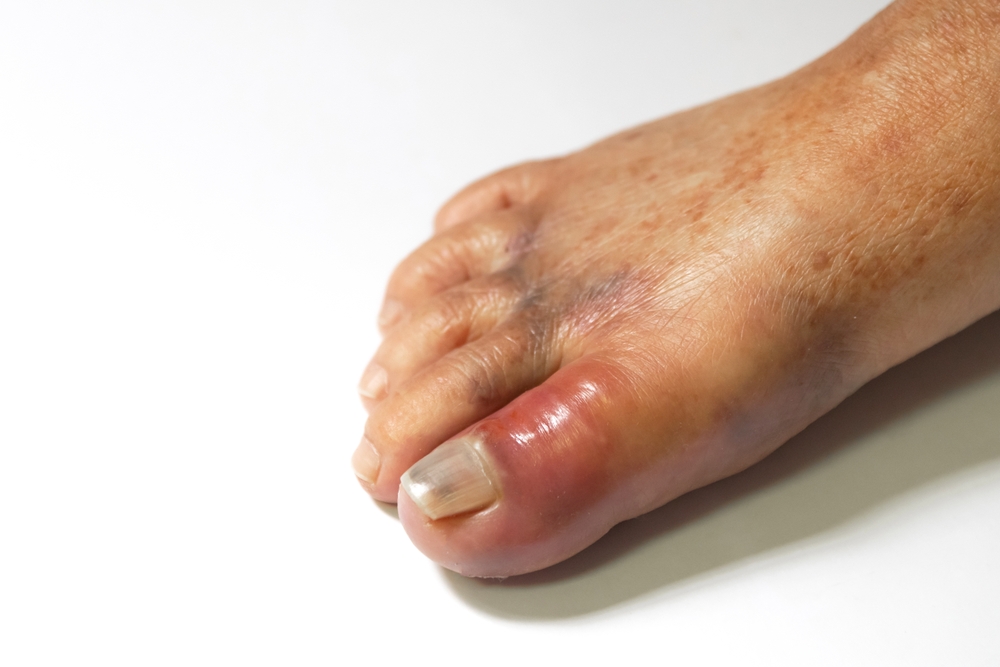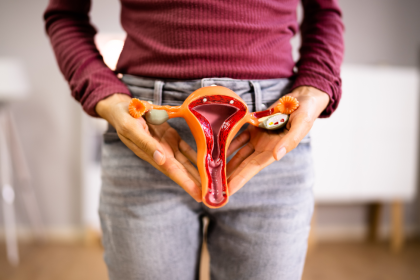They’re the farthest points from your heart, often stuffed into shoes and easily forgotten. But your toes might be sending important messages about your cardiovascular health long before other symptoms appear. Those cold, discolored, or uncomfortable toes aren’t just an inconvenience. They might be your body’s early warning system for circulation issues that deserve attention.
Why your toes get the short end of the circulation stick
Your circulatory system works against gravity to pump blood from your heart to your extremities and back again. This impressive feat becomes most challenging at the points farthest from your heart, making your toes particularly vulnerable to even subtle changes in circulation.
Think of your circulatory system like a complex plumbing network. The water pressure tends to be strongest near the main pump and weakens at the farthest pipes. Similarly, blood flow faces the greatest challenges reaching your toes, especially when anything compromises the system’s efficiency.
This vulnerability explains why circulation problems often appear in your toes before becoming noticeable elsewhere. By the time you develop obvious symptoms in larger blood vessels or organs, the issue has typically progressed significantly. Recognizing these early toe signals gives you valuable time to address underlying causes before more serious complications develop.
The temperature tale your toes are telling
Cold toes represent perhaps the most common circulation warning sign, yet many people dismiss this symptom as simply having “poor circulation” as if it were an unchangeable trait rather than a potential health concern.
While occasional cold toes during winter months or in air-conditioned environments affect many people, persistently cold toes regardless of ambient temperature warrant attention. This chronic coldness suggests insufficient blood flow reaching these extremities, particularly when one foot feels colder than the other or when the coldness extends beyond the toes themselves.
The contrast between your toes and the rest of your body provides important clues about circulation quality. When your body feels comfortably warm but your toes remain cold to the touch, this temperature discrepancy highlights potential circulation issues rather than just environmental factors.
Warming behaviors like wearing extra socks year-round, taking frequent hot baths specifically for foot warming, or needing heating pads for your feet despite comfortable room temperatures indicate your body’s attempts to compensate for poor toe circulation. Recognizing these adaptations as potential warning signs rather than just personal preferences helps identify circulation concerns earlier.
The color changes worth watching
Your toes sometimes change color in ways that reveal important information about your circulation. These visual signals range from subtle to dramatic, with each pattern suggesting specific circulatory challenges.
Pale or white toes, particularly when elevated, suggest insufficient arterial blood flow reaching these extremities. This whiteness sometimes appears temporarily when pressing on toenails, with delayed color return indicating reduced circulation quality. The most concerning pattern involves spontaneous whitening without elevation or pressure, especially when accompanied by pain or numbness.
Bluish or purplish discoloration, medically termed cyanosis, indicates deoxygenated blood accumulating in your toes due to sluggish circulation. This color change often appears after standing or sitting for extended periods and should improve upon walking or elevating your feet. When bluish coloration persists despite position changes, it suggests more significant circulation impairment.
Redness that appears when lowering your legs after elevation signals reactive hyperemia, where blood rushes into oxygen-deprived tissues once circulation improves. While this redness represents your body’s normal compensation for positional circulation changes, excessive or prolonged redness indicates your cardiovascular system struggling to maintain proper blood flow.
The swelling signals that reveal vein troubles
While we often focus on arterial circulation bringing oxygenated blood to tissues, venous circulation returning blood to your heart proves equally important for toe health. When veins function suboptimally, fluid accumulates in your tissues, creating characteristic swelling patterns that often begin in the toes.
Evening toe swelling that improves overnight suggests early venous insufficiency, where veins struggle to overcome gravity and return blood efficiently against gravitational forces. This pattern typically worsens throughout the day and improves with elevation, indicating your venous system functions better when not fighting gravity directly.
Toe swelling that persists despite elevation and overnight rest indicates more significant circulation issues requiring attention. This persistent swelling suggests your venous system lacks the elasticity and valve function needed to maintain proper fluid balance, potentially affecting overall cardiovascular health.
Asymmetric swelling, where toes on one foot appear more swollen than the other, raises particular concerns about potential blood clots or localized circulation problems. This one-sided pattern warrants prompt evaluation, especially when accompanied by warmth, tenderness, or color changes in the affected foot.
The toenail transformations nobody told you about
Your toenails provide surprisingly informative windows into your circulation quality, with several changes specifically indicating reduced blood flow long before other symptoms develop.
Thickened toenails may result from various factors, including fungal infections, but persistent thickening across multiple toes often indicates circulation insufficiency. Poor circulation delivers fewer nutrients and growth factors to your nail matrix, resulting in slower, irregular growth patterns and characteristic thickening.
Visible ridges or grooves running vertically on your toenails sometimes reflect circulation variations, with more pronounced ridging suggesting significant fluctuations in blood flow to your nail matrix. These textural changes essentially record your circulation history, with each ridge potentially representing periods of compromised blood flow.
Slow-growing toenails compared to fingernails suggest circulatory challenges rather than just normal variation. While toenails naturally grow approximately three times slower than fingernails, significantly slower growth or differences between toes may indicate circulation problems affecting your lower extremities specifically.
The peculiar sensations with serious implications
Unusual sensations in your toes often accompany circulation changes, providing subjective warning signs that complement visible symptoms. These sensations range from mildly annoying to seriously uncomfortable, with each pattern offering clues about your circulatory health.
Pins-and-needles tingling, particularly when not caused by pressure or position, suggests compromised circulation affecting nerve function in your toes. This tingling often appears intermittently at first, typically during periods of reduced activity when circulation naturally slows, before potentially becoming more persistent as circulation problems progress.
Burning sensations despite cool toe temperature seem counterintuitive but actually indicate nerve irritation from poor circulation. This burning paradoxically often feels worse at night or during rest periods when overall circulation slows further, creating a distinctive pattern that helps distinguish circulation-related burning from other causes.
Numbness developing progressively from toe tips backward suggests inadequate blood flow gradually affecting larger areas. This numbness pattern typically begins intermittently during specific activities like walking, progressively lasting longer and affecting more of your foot as circulation problems advance.
The exercise response revealing hidden problems
How your toes respond to physical activity provides particularly valuable information about your circulatory reserve capacity. Even when circulation appears adequate at rest, activity increases oxygen demands and may reveal limitations not otherwise apparent.
Pain developing in your toes during walking but relieved by rest, known medically as claudication, strongly suggests arterial circulation problems. This pain pattern reflects insufficient blood flow meeting increased oxygen demands during activity, essentially representing angina of the extremities similar to chest pain in coronary artery disease.
Color changes during or immediately after exercise offer additional clues about circulation quality. Toes becoming extremely pale during activity or developing abnormal redness afterward suggest your circulatory system cannot adapt properly to changing metabolic demands.
Recovery time after exercise provides further information about circulatory capacity. While some fatigue is normal after significant activity, your toes should quickly return to their normal color and comfort level. Prolonged discoloration, tingling, or discomfort after exercise indicates your circulation struggling to restore normal blood flow patterns.
When diabetes complicates the picture
For people with diabetes, toe circulation deserves particularly careful monitoring as diabetes affects both large and small blood vessels throughout the body. The combination of circulation changes and nerve damage creates unique risks requiring vigilant attention.
Subtle temperature changes often precede visual symptoms in diabetic feet, making regular temperature monitoring valuable for early detection. Research shows temperature differences greater than 4°F between corresponding points on opposite feet often signal developing circulation problems even before visible changes appear.
Toe infections or wounds healing slowly indicate compromised circulation limiting your body’s repair capabilities. While minor cuts might heal slightly slower on anyone’s toes compared to areas closer to the heart, significantly delayed healing suggests circulation inadequate for proper tissue repair and regeneration.
The dangers of overlooking these diabetic toe signals cannot be overstated. Minor circulation changes can rapidly progress to serious complications due to diabetes’ multiple effects on blood vessels, nerves, and immune function. Regular professional foot examinations complement your own observations to catch problems at their earliest, most treatable stages.
Simple strategies to improve toe circulation
While significant circulation problems require professional medical care, several habits and practices can maintain or improve mild circulation issues affecting your toes. These approaches support both immediate blood flow and long-term vascular health.
Regular walking serves as perhaps the most effective natural circulation enhancer for your toes. This activity engages your calf muscles, which function as secondary pumps supporting blood return from your lower extremities. Even short, frequent walking breaks throughout the day significantly improve toe circulation compared to prolonged sitting or standing.
Elevation during rest periods reduces gravitational challenges to your circulation, allowing more efficient blood flow both to and from your toes. Positioning your feet above heart level for even 15-20 minutes several times daily provides your circulatory system valuable assistance that benefits overall vascular health.
Proper footwear plays a surprisingly important role in toe circulation, with tight shoes restricting blood flow and potentially contributing to long-term circulation problems. Adequate toe box width, proper arch support, and appropriate cushioning all contribute to maintaining healthy blood flow to your toes during daily activities.
Those seemingly minor symptoms in your toes might be providing valuable information about your overall circulatory health. By recognizing and addressing these early signals, you potentially avoid more serious complications while supporting your cardiovascular system throughout your body. Your toes may be the farthest points from your heart, but the messages they send deserve close attention for your heart’s sake.















